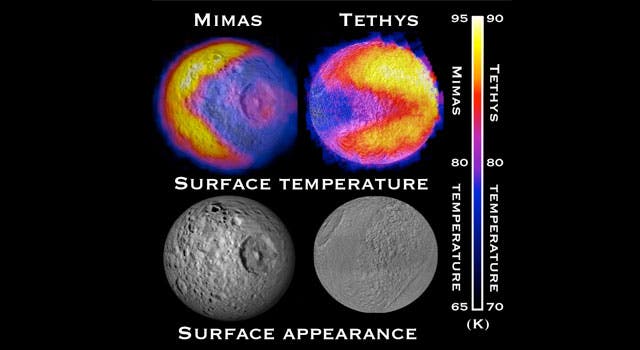
Seems like Saturn and its moons make up for a veritable gamer’s paradise after infrared imaging of the moon’s Tethys surface revealed a pattern that bears an uncanny resemblance to the 1980s video arcade emblem. Actually, this is the second time the Pacman feature has been spotted in the Saturn system, which suggests Saturn and its moons had evolved differently.
NASA serves a scientific explanation:
“Scientists theorize that the Pac-Man thermal shape on the Saturnian moons occurs because of the way high-energy electrons bombard low latitudes on the side of the moon that faces forward as it orbits around Saturn. The bombardment turns that part of the fluffy surface into hard-packed ice. As a result, the altered surface does not heat as rapidly in the sunshine or cool down as quickly at night as the rest of the surface, similar to how a boardwalk at the beach feels cooler during the day but warmer at night than the nearby sand. Finding another Pac-Man on Tethys confirms that high-energy electrons can dramatically alter the surface of an icy moon. Also, because the altered region on Tethys, unlike on Mimas, is also bombarded by icy particles from Enceladus’ plumes, it implies the surface alteration is occurring more quickly than its recoating by plume particles.”
The first time the Pacman feature was seen was in 2010 when an infrared wavelength survey of Mimas was made.






